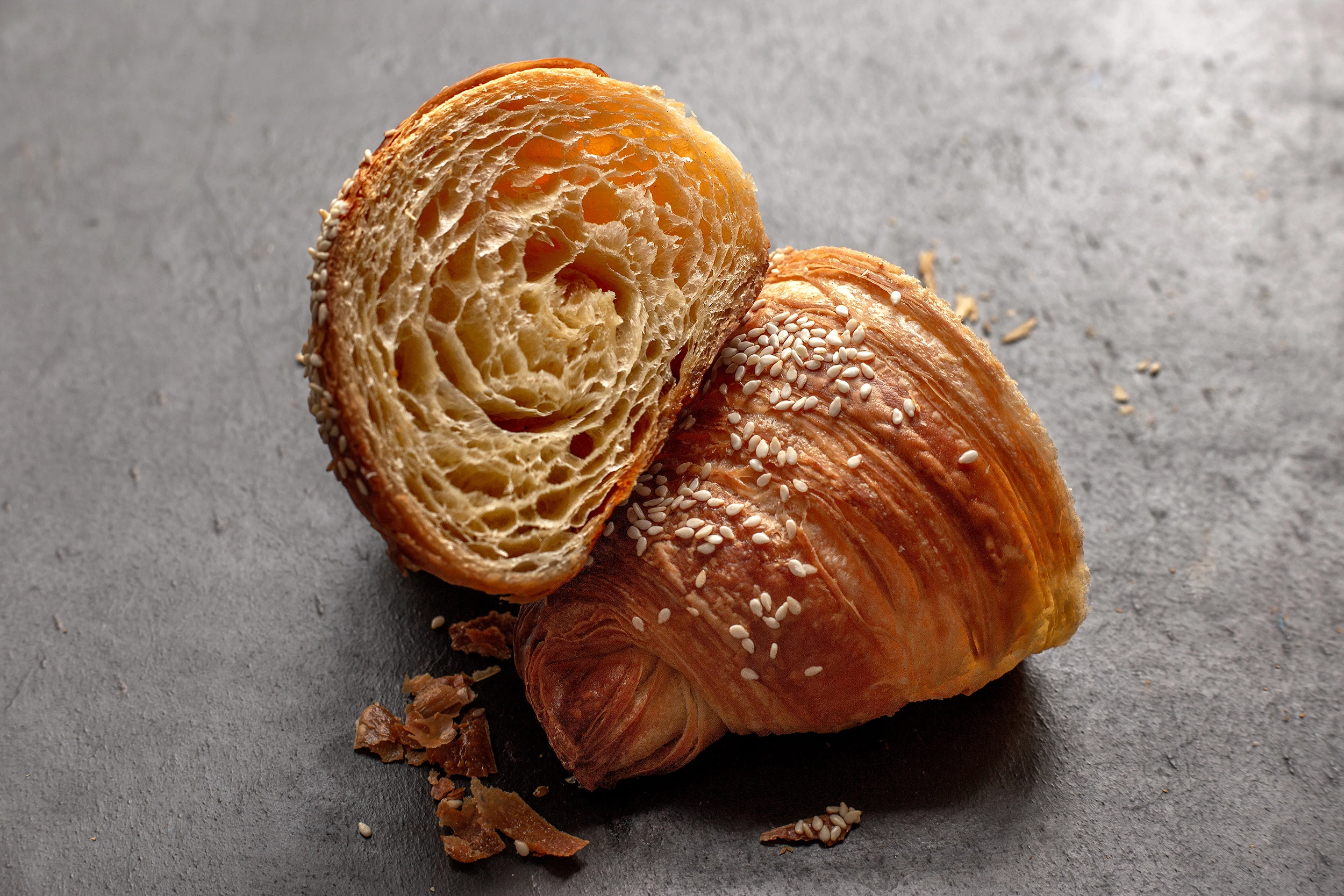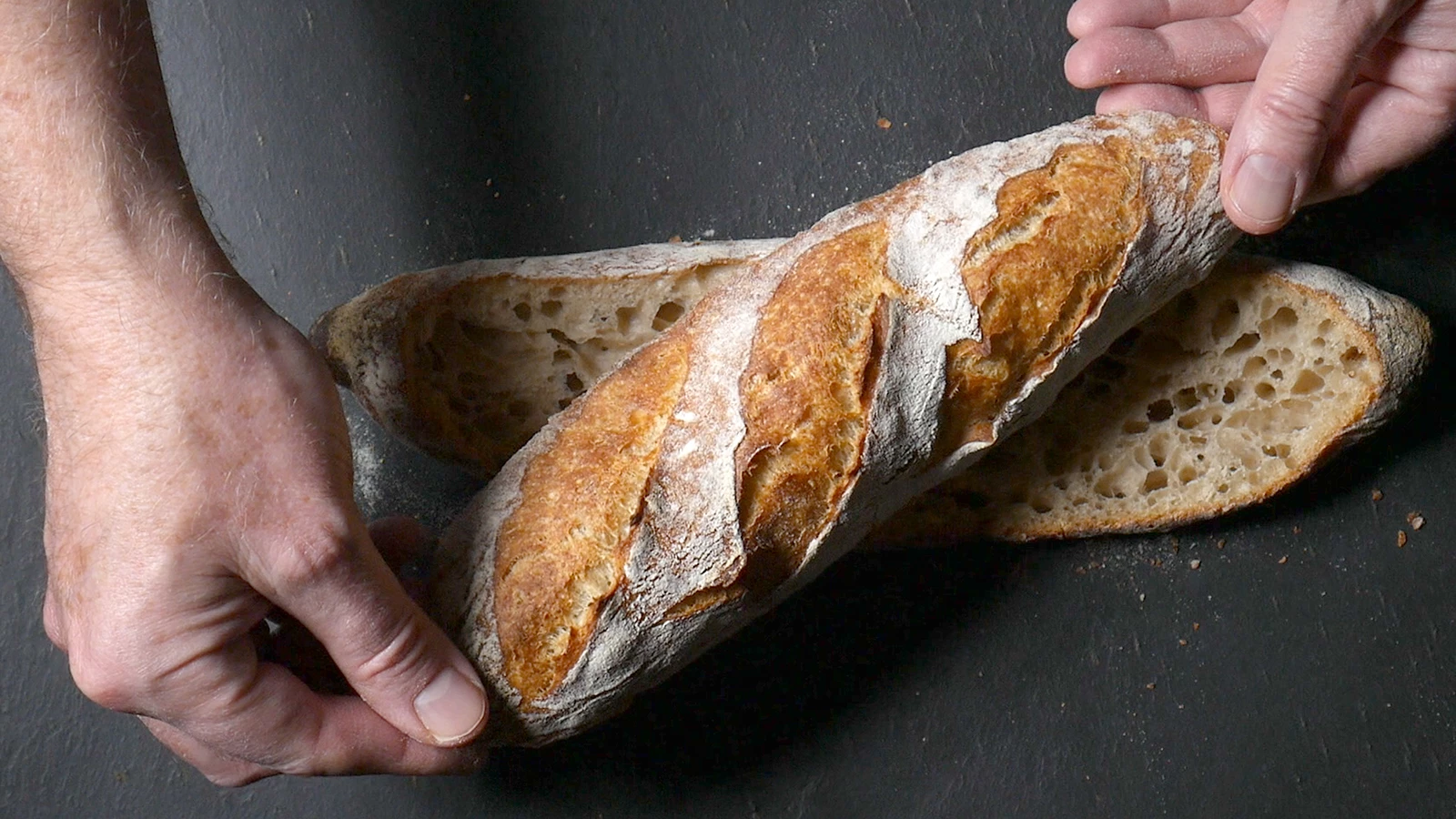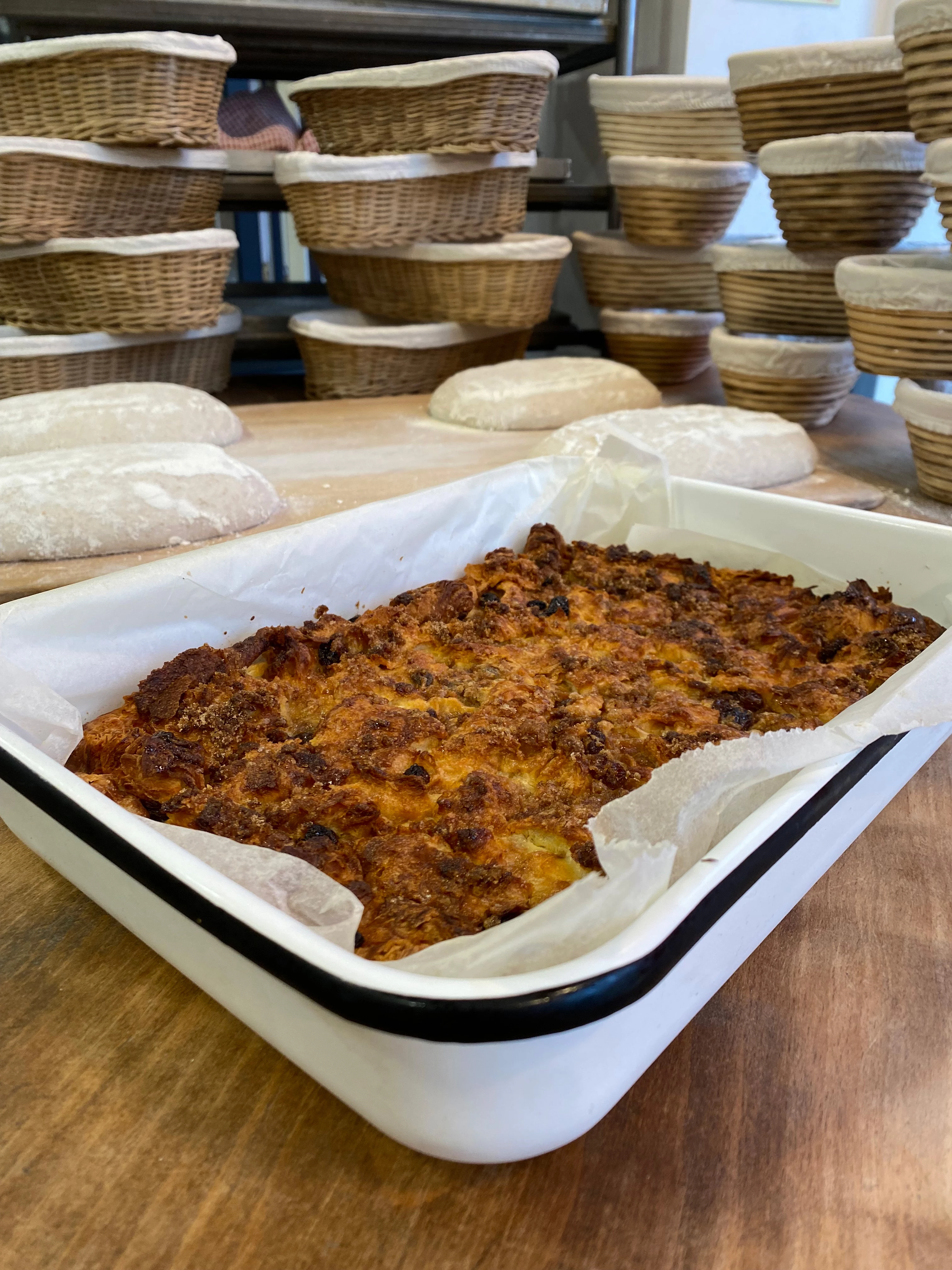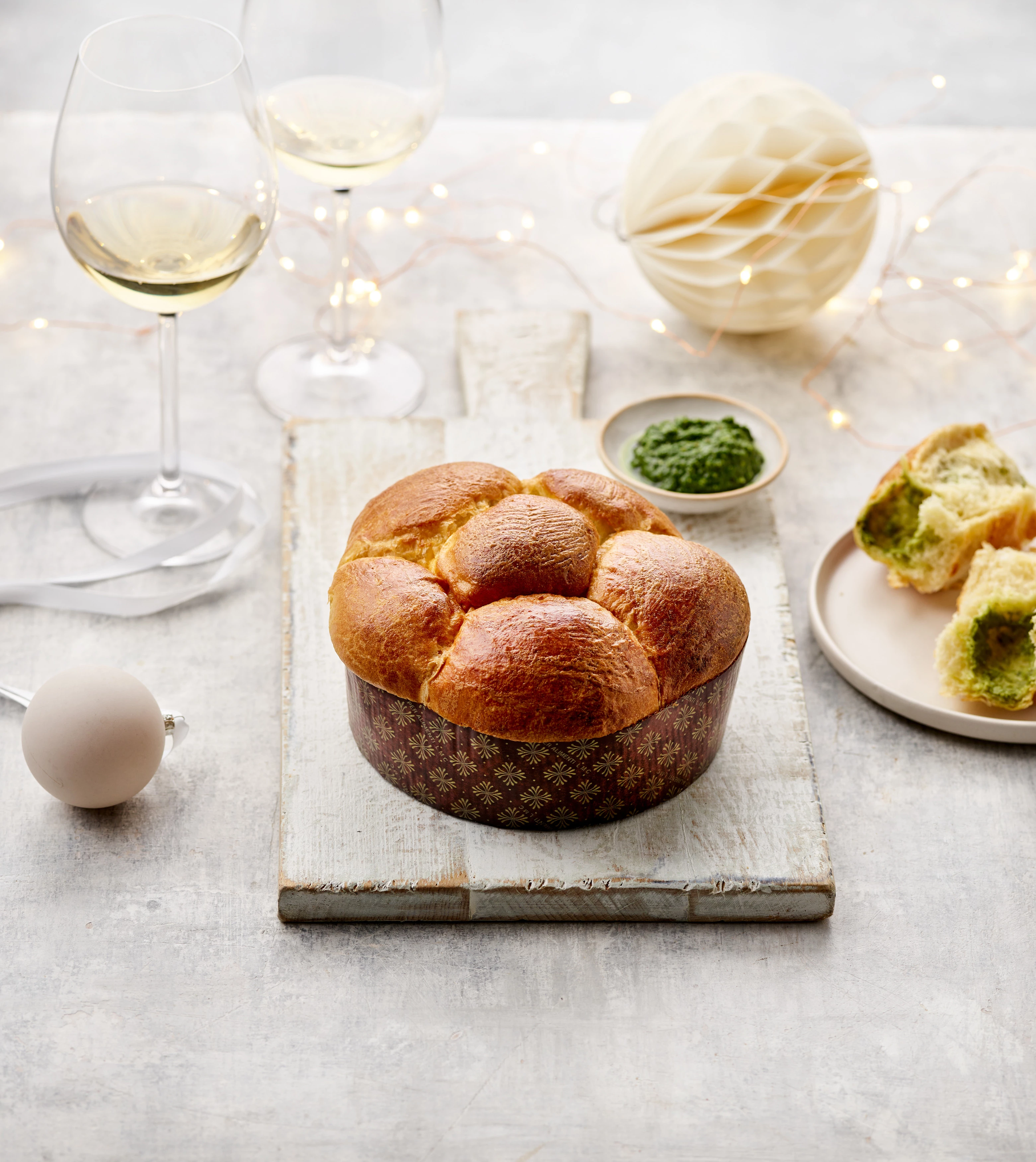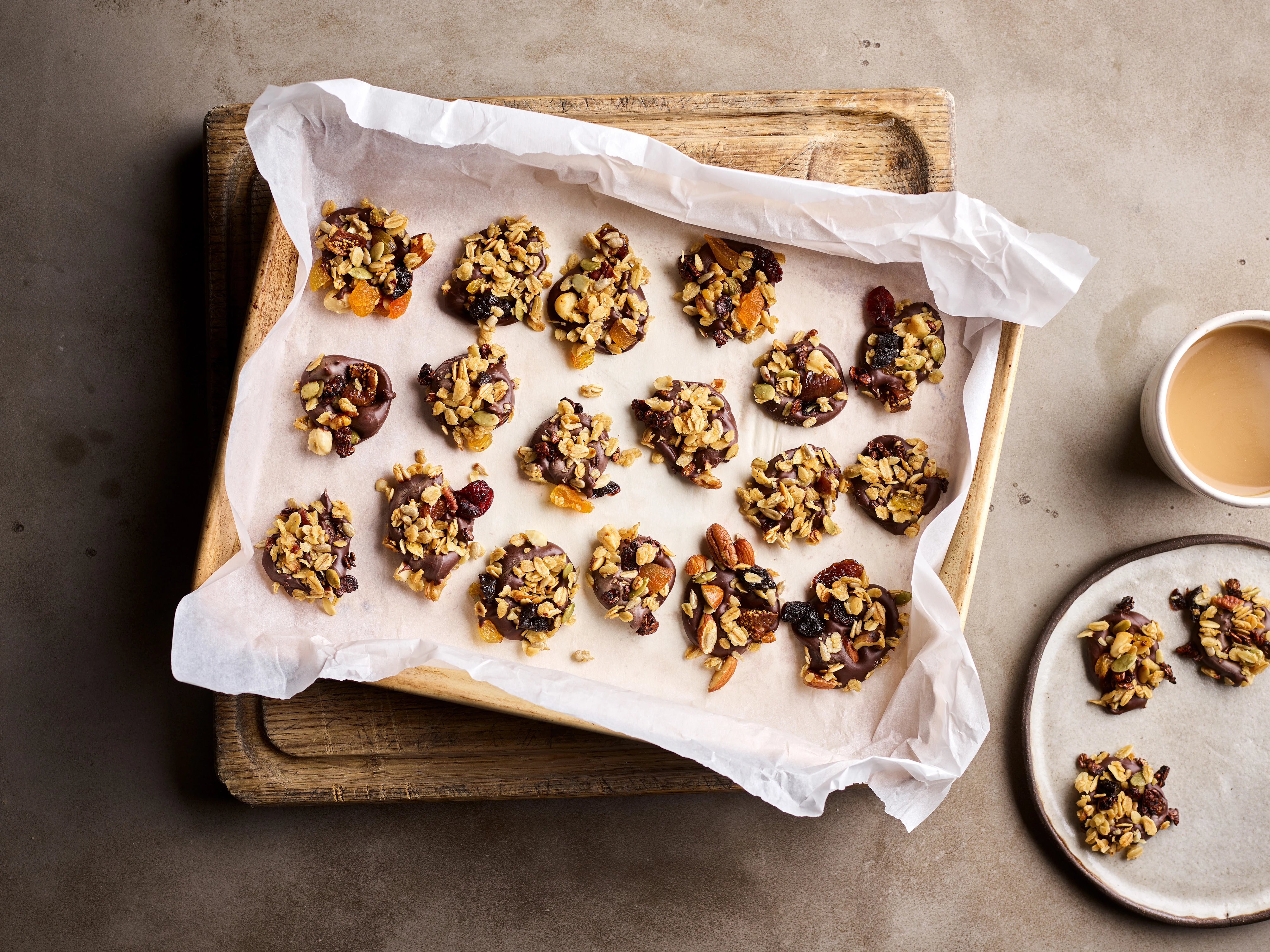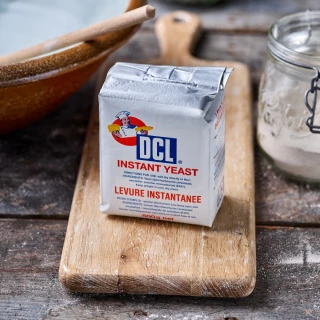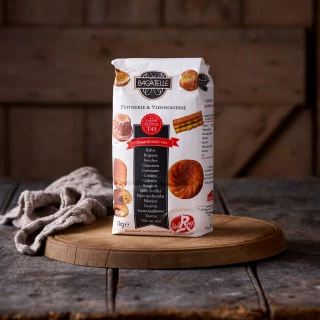Ingredients
for the dough
10g Instant Dried Yeast (SAF Red Label)
1 egg (60g)
170ml warm water
500g Farine de Gruau CRC T45 Red Label Bagatelle (French Croissant and Brioche Flour)
50g caster sugar
10g fine salt
50g softened unsalted butter
Extra water and flour, as needed
For rolling
250g cold unsalted butter
Beaten egg to finish
This is a three-day adventure to take you towards croissant perfection. Much easier and less effort than classic puff pastry, with much less rolling to do. This recipe only makes 6, but I’d like you to start here, getting your technique as sharp as you can, before you set up making dozens to supply your entire neighbourhood as the local viennoiserie star baker. You can do it, I believe in you, but just practice a little first.
For me, it’s got quite addictive, and we’ve now had home-made croissants for Christmas day breakfast for the last 5 years. Baked, spilt horizontally and filled with grated Gruyère, ham, leeks and a cheeky swirl of cold, mustardy béchamel, and all set up on baking trays in the fridge by Christmas eve, so the next morning I can heat them up in the oven, even if I’m bleary-eyed from present-wrapping the night before.
The key to perfect flakiness is to keep the dough cool during rolling and shaping, then aim for a long rise at room temperature until doubled in size: anything from 18°C to 24°C is fine, but don’t go above that as the butter softens and the croissants turn out heavy, with blurred crumbly layering.
A word about butter. I have found it best to thoroughly work the butter (see step 3) first to make sure it handles smoothly. This seems to make the rolling process far easier.
Makes 6 Croissants
Method
Place the yeast in a mixing bowl, dissolve it with the 30ml warm water then stir in the 2 tsp flour to make the pre-ferment, and leave for 30 minutes to bubble. Then whisk in the egg and 170ml water until smooth. Add the 500g flour, sugar and salt and mix well. Knead the dough for about 10 minutes either by hand or using a sturdy upright stand mixer, until very smooth. Add slightly more water or flour if needed: you want the dough to be quite firm but still slightly stretchy. Then add the 50g softened butter in small pieces and knead this through evenly. Wrap the dough well, then chill it in the refrigerator overnight.
The following day you need to get the 250g butter pliable but still cold, and rolled into a thin rectangle, and this is how to do it. Take the cold butter straight from the fridge, unwrap it, then place it between two sheets of non-stick paper. Using a rolling pin, thwack it flat so it’s about 1cm thick, then peel off the top sheet, fold the butter in two using the bottom sheet, reposition the butter between the two sheets and thwack it flat again. Keep your (warm) hands off, so the butter stays as cold as possible. Then fold and thwack it once more. Do this a few more times, until the butter is quite bendy but not softened. Then fold up the edges of both sheets of non-stick paper, to make a neat rectangle slightly bigger than the butter: about 18cm by 12cm. Roll the butter carefully out to fill the corners in an even layer.
Next, roll the dough into a rectangle about 20cm by 25cm. Unwrap the butter sheet and place it in the centre of the dough, leaving margins of about 1cm top and bottom, and more than 6cm to both left and right. Fold the sides of the dough in, to cover the butter, then seal the top and bottom edges by pressing down with the rolling pin. Then rotate the dough 90 degrees so the sealed ends are to the left and right. Roll it out to left and right into a strip about 60cm by 20cm. Dust sparsely and evenly with flour from a shaker as you roll, using a soft brush to remove all excess flour from the dough, as otherwise it will start to get fragile.
Trim the ends off, just to the point where you can see the butter (you can add these bits back into another dough); this removes dough that doesn't have butter lamination. Fold the ends into the centre, not quite touching. Then fold it right-over-left, like a book closing. This is called a book fold. Wrap the dough well and chill for 20-30 minutes. Then rotate the dough 90 degrees and roll the dough out to about 60cm by 20cm again. This time, trim the edges once more until you can see butter, then fold the left-hand third in to cover the centre third, and then the right-hand third in over that. This is called a single fold. Wrap and chill the dough for 20-30 minutes. That’s all the hard work done.
To shape the croissants, roll the dough out to 35cm by 25cm by ½cm thick, and chill it until very firm (I slightly freeze mine on a board). Mark the edge nearest you at 0cm, 10cm, 20cm and 30cm; then mark the edge furthest from you at 5cm, 15cm, 25cm and 35cm. Cut the dough diagonally, from the 0cm mark to the 5cm mark, then back to the 10cm mark, continuing until you have six triangles 10cm wide at the base and 25cm from base to tip, and two narrow offcuts.
Gently stretch the triangles as this will give the dough a little tension to hold its shape when rolled. Roll the triangles up tightly from base to tip, pressing the dough gently down on the board as you do so, to keep the roll quite tight. Place on a tray lined with non-stick paper, with the point of the triangle underneath (you can also roll the offcuts up to make two “minis”). Cover loosely and leave to rise somewhere cool (16°C-24°C) overnight, until slightly more than doubled in size. For most of the year, my kitchen is at that temperature overnight, but check first if you’re not sure.
The next morning, heat the oven to 180°C/160°C fan/350°F/gas mark 4, brush with diluted beaten egg and bake for about 30 minutes until a rich golden brown. Allow to cool on a wire rack before eating, or wrap carefully and freeze once fully cold.

